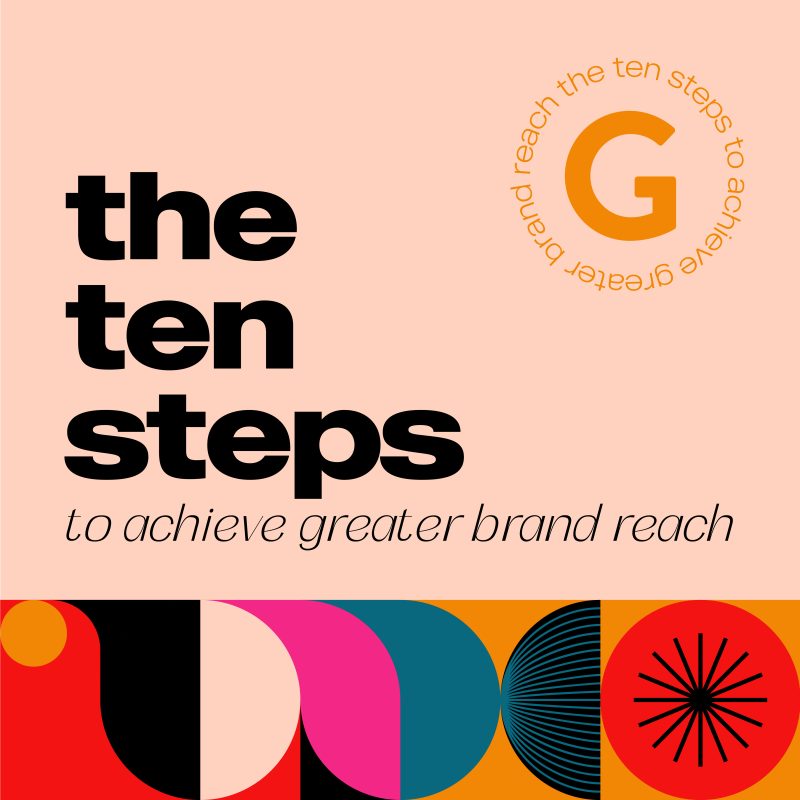The world is gradually moving toward greater inclusivity, and brands are working to embrace this change, but they are not always able to do so without encountering (or even creating) some bumps in the road. Some companies have made major missteps in their efforts to embrace social change, and have endured pronounced backlash as a result.
Now is a good time for brands to take a step back and look at what they stand for, what they say, and how they say it. But how do you widen your brand reach without risking public outcry?
1. Consider Your Customers
Pretty much every business wants to grow and make money, but expanding brand reach in itself cannot be your sole purpose for being. Successful brand strategy requires delivering real value to customers. To authentically and meaningfully widen your brand reach and appeal, you first have to look at which audiences have a real need for your company’s expertise, and think about who these customers are.
Of course it’s important to quantify your new audience, but really defining who they are goes far beyond the numbers and the demographic details like age, gender and household income. Creating an impactful brand strategy requires really knowing your target audience as people. What motivates them? What inspires them? What problems do they have? What is unique and special about them?
In working through this exercise, you are likely to notice that your various audiences have very different needs and perceptions, and that they also have several things in common. It is very important to consider all of these audiences, so that, rather than swinging all the way to something new at the expense of customers you are already working with, you can identify the relevant commonalities. This will help you focus your communications on these areas of common ground.
This is even true in the B2B space, as we saw when we worked to develop a new brand strategy for Cliq, who works with Agents to offer merchant services. Research showed that, although they don’t sell to merchants directly, and are even more removed from consumers, Cliq has to be seen as a trusted source for all of these audiences in order to build a reputation in the payment processing and FinTech space.
For Cliq, finding the common ground across all of these audiences and updating their brand identity accordingly allowed the brand to connect and build trust in the market. This earned them an opportunity for growth with a new audience of Independent Software Vendors (ISVs), who sell to these same customer groups. Through authentic brand messaging that resonated with all audiences, these ISVs learned that they could partner with Cliq to help them bolster their own offerings.
2. Understand Your Why
Now that you have humanized your audiences, you are in a position to get very clear on why your brand can, should and/or will take on a mission to help them. In short, thinking of your target audience as unique and special members of your community can help you to recognize how your brand is realistically suited to meet their needs. What kind of solutions will improve their lives? How can you help?
American Career College is a brand with a very clear sense of why they want to help their audience. They understand that their students aren’t interested in fitting into the traditional college mold, but they are still seeking a path to build a better life — and they deserve a chance to do so. With that kind of clarity on who they are helping and why, it was easy to communicate how the brand can help them experience “college the way it should be”.
3. Understand Your What
When you know what your audience needs and why you want to help them, you can look at your capabilities and identify what, exactly, your brand can do to meet their needs. This is the beginning of identifying your brand promise, and the product offerings that will help you deliver on that promise.
When we worked with Brandini Toffee to expand their brand reach, our research showed that each group of consumers viewed the product differently, but that they all had something in common: they all had a desire to treat themselves and the ones they loved, and they saw Brandini Toffee as a decadent way to do just that. Tapping into this insight allowed us to elevate their brand identity and lean into the sense of indulgence audiences craved with updated messaging and visuals across all consumer touchpoints — helping to drive a 25% increase in sales.
4. Understand Your Boundaries
Nobody can be all things to all people with a single product offering. Even Coca Cola® knows this, which leads them to manage 5 distinctly branded Coca Cola products — not to mention the 32 other beverage brands in the parent company’s portfolio.
Very few of us have access to the resources Coca Cola draws on to run such a vast family of brands. That’s why, just as important as it is to recognize who your audience is and what they need, it’s also equally important to recognize who your audience isn’t. Avoid the temptation to say that you are selling to everyone. Nobody’s brand reach is this ubiquitous – not even Coca Cola’s!
5. Align Your Brand Values
With all of this soul searching above, it is time to really take a look at one of the most foundational elements of your brand book – your brand values. These values are the pillars your brand stands on. From here you will be able to write your mission and vision statements, set your strategic direction, make decisions about your business model, guide your team, and so much more. Your brand values give you a framework to tell your story.
Arriving at this set of values is not as easy as it sounds. There is no one-size-fits-all way of getting there. As a brand identity agency, we’ve had the opportunity to walk a lot of clients through this process and we have created a case study about Brand Values that helps explain some of the ways to identify what is most important for your brand.
6. Tell Your Brand Story
Not many of us can recall the exact date that Alexander Hamilton was born, how long he lived, or which regiment of the army he served in. But those of us who saw the play are likely to remember his story, have strong feelings about his contribution to the founding of our country, know what it was like to be a politician at the time, and feel saddened by the poor decisions that led to his death. That is the magic of storytelling.
Most people talk about their brands and their products in factual ways — the features, advantages and benefits. Talking about your brand this way is like asking people to memorize the dates and details about the Titanic. Your brand has a story. All brands do. Breaking free from the data and telling your brand story in a compelling way helps to connect authentically with your customers in a way that they will remember.
7. Reinforce Your Brand Narrative
If someone is describing a person whom you’ve never met, maybe someone you’ll be meeting up with for a blind date, would you expect them to stop at what they do for a living? Let’s just say your friend describes this person as being incredibly intelligent and organized, with a high-level job and a commanding presence that really lights up a room. Would you craft a picture in your mind of what you believe this person will look like? If the person then walked in with uncombed hair and three holes in their dirty shirt, would you start to call-into-question everything your friend described?
Your brand visuals have to match the brand identity you are portraying with your brand story. Visuals reinforce the narrative that you are building for your audience. Whether you are trying to convey a sense of trust, fun, excitement or eloquence, your visual system needs to help you tell that story in a way that all of your audiences can understand.
8. Craft a Brand Experience
With all of these foundational decisions made, you can craft a brand experience that will bring this vision to life for your customers. Every touchpoint is an opportunity for you to achieve brand reach — to either step up or fail to deliver on your brand promise. That includes your social media presence, your website, its chat features or webforms (and email responses), your packaging, and everything in between.
Branded content becomes very important at this stage. Many brands struggle with too few resources or expertise to develop the kind of content they want their customers to see, especially if they are trying to talk to new, unfamiliar audiences, but it is a critical component to your brand identity. This is how your customers experience your brand and share it with others.
9. Brand Activation: Start Within
It may sound cliche, but it is true that your employees are your most important brand ambassadors — whether you have trained them properly or not. That’s why the most successful brands treat their employees as another target audience. If they are happy and understand what the brand stands for, they will happily communicate this with your customers and prospects.
When launching a rebranding campaign or starting to communicate with new audiences, employee activation cannot be overlooked. Employees need to be brought along for the ride, see and understand the changes, and embody the brand values. This can happen with an internal brand campaign, including giving employees reference cards with the audience personas, brand mission, vision and values for their work station.
10. Share Externally
No brand strategy would be complete without a go-to-market plan. This includes developing evergreen brand campaigns that continually tell and reinforce your brand story, as well as performance marketing tactics that are designed to pull your customers through the purchase funnel.
Go-to-market plans take many forms, but the most effective marketing plans take an omni-channel approach, weaving together organic content across your website and social media platforms, paid media across multiple digital and IRL channels, social proof with peer reviews and content creator engagement, and direct customer communications.
Gigasavvy is an award-winning brand strategy and creative agency that has successfully developed and brought many brands to life with authentic storytelling and strategic go-to-market planning. Contact us to see how we can help bring your brand to life.



